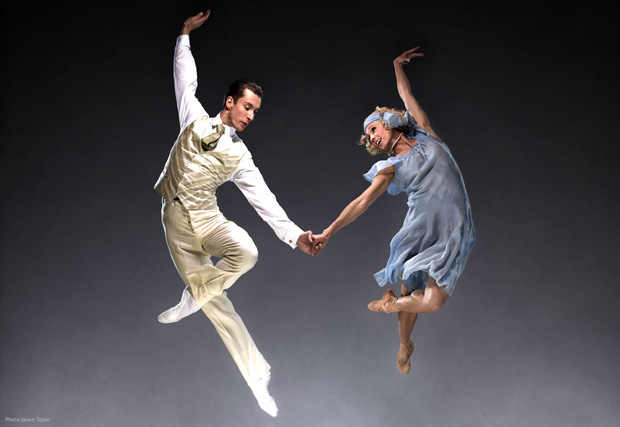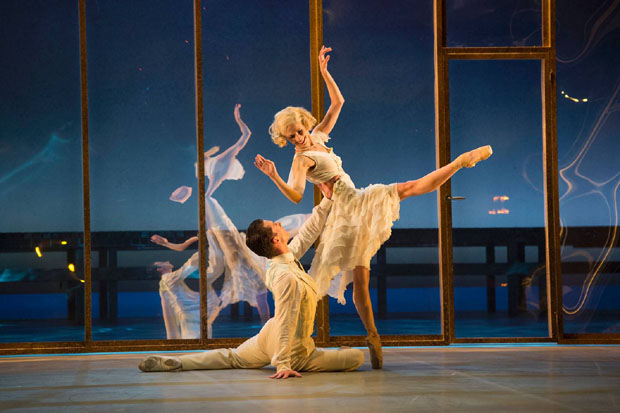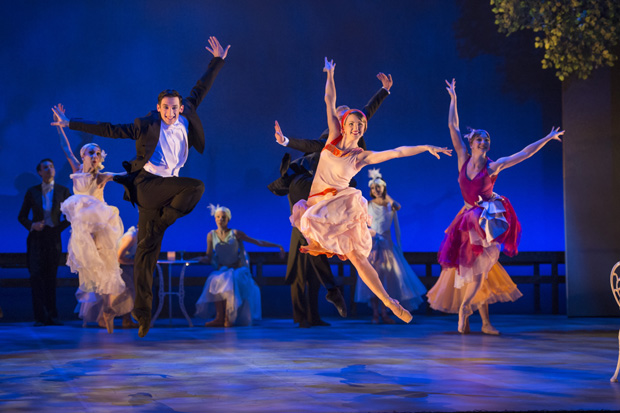With the film on release and 1920s fashion seeing a revival on the high street, the Northern Ballet couldn’t be more on trend with their latest production of The Great Gatsby at Sadler’s Wells. A complex story in text, I was intrigued to see how it would translate to a wordless medium. The production sticks very closely to the original text in both sequence and plot and does an admirable job in capturing the elaborate story, however, given the entangled web of personal relationships and intricacies of language and tone that so characterise the book, in some respects it does find itself lacking. A number of scenes caused some confusion due to the addition of characters from memories appearing alongside reality. Tropes and actions are attributed to some characters to add clarification such as George with his tyre and Jordan with her golf swing, which was helpful if occasionally jarring.

Credit must go to the staging and lighting which were both extremely well thought out and incredibly effective. The opening scene introduced the pier down stage which repeatedly reappeared as a constant physical barrier to Gatsby and Daisy’s happiness, while mirrors and opaque gauze hangings played a role in portraying how muddled and unclear their relationship was; with nothing ever as clear as the mirror shows it to be. This device is used to its full potential in the second act at a party in Gatsby’s house in which he and Daisy find themselves dancing alone but behind the mirror are revealed to be three versions of their memories. Dancing the same routine, but in slight delay, this and moments from a further scene where Gatsby dances with both the real Daisy and the Daisy from his past, explored interesting ideas of how memory works and whether the illusion or the reality is in fact more captivating and fulfilling.

A concerted effort was made to embrace the period in which the novel is set, integrating tunes of the era and a nod to the styles of dance such as the Charleston. While the singing, in an effort to cultivate a party atmosphere, felt a bit surprising given the usual silence of ballet, and some of the routines that strayed further from traditional ballet felt awkward at points, I felt their inclusion was most welcome. Some elements almost verged on the side of contemporary dance, including the use of props and staging, in more contemplative solo sequences, really testing the physicality and skill of the male dancers especially. Physical intimacy and closeness is rarely expressed in ballet aside from physical proximity between dancers, but sexual relationships and attraction are at the heart of the plot. Some hidden undressing followed by some well placed thrusting in scenes between Myrtle and Tom was surprising, but apt to express this. Being close enough to the stage meant that we were able to catch the dancers’ facial expressions and understand better the complex web of emotions.

Martha Leebolt as Daisy was an admirable long suffering wife but had little of the expected allure of the character, while her husband Tom (Kenneth Tindall) demonstrated the complex blend of brawn and ballet choreography, while angrily draining a bottle of champagne (perhaps more ballet than brawn on that occasion). Such are the subtleties and style of ballet that it is hard to portray conflicting emotions effectively without the section feeling somewhat overblown – the exact opposite of how emotion is dealt with in the text, as a very private, internal struggle. Characterisation and the conflict between what is said and what is meant is fundamental to the novel, and yet again cannot translate to the ballet; visually exquisite but perhaps, through no fault of their own, left emotionally wanting.
For more information on the Northern Ballet visit the website.



